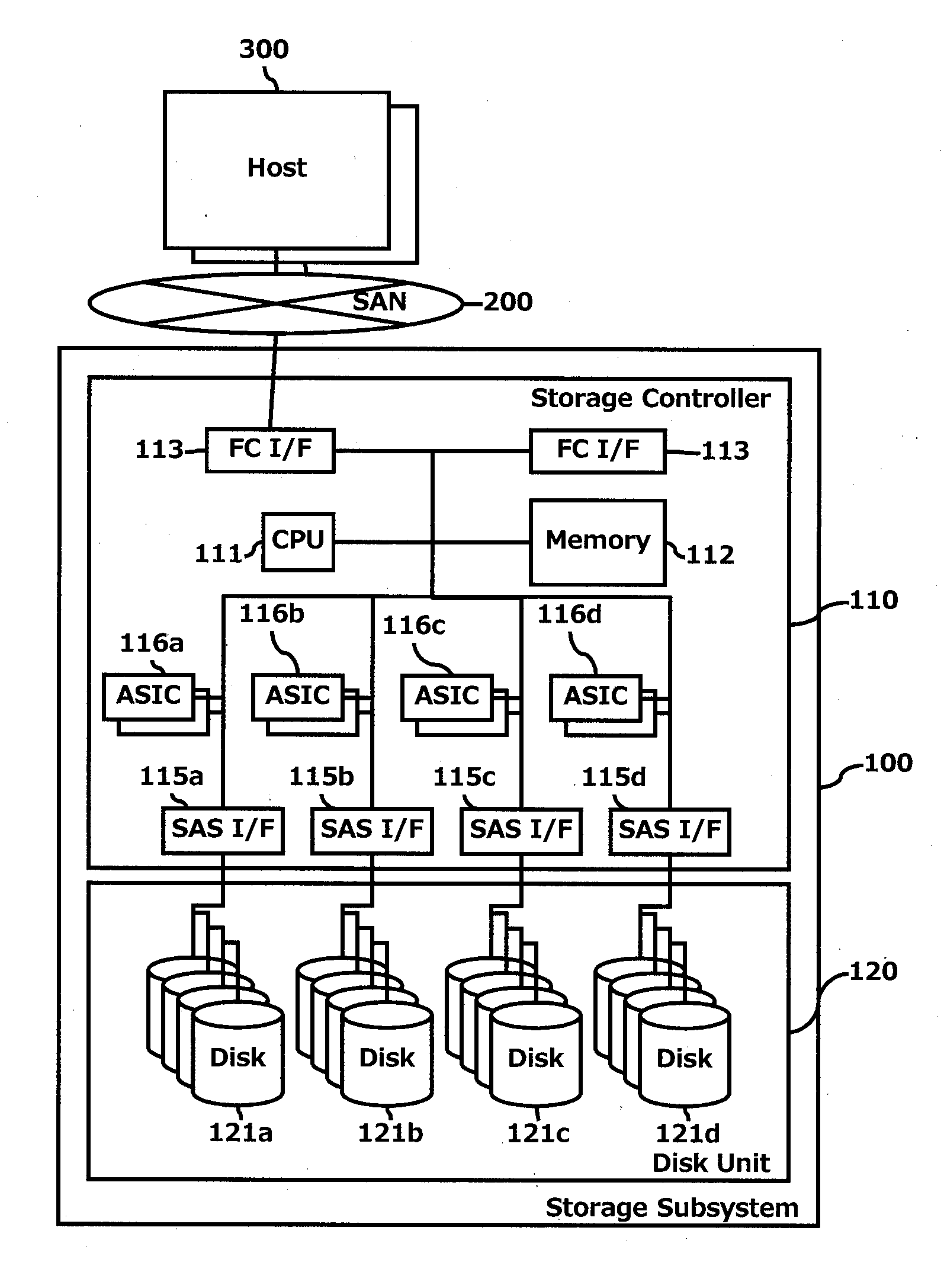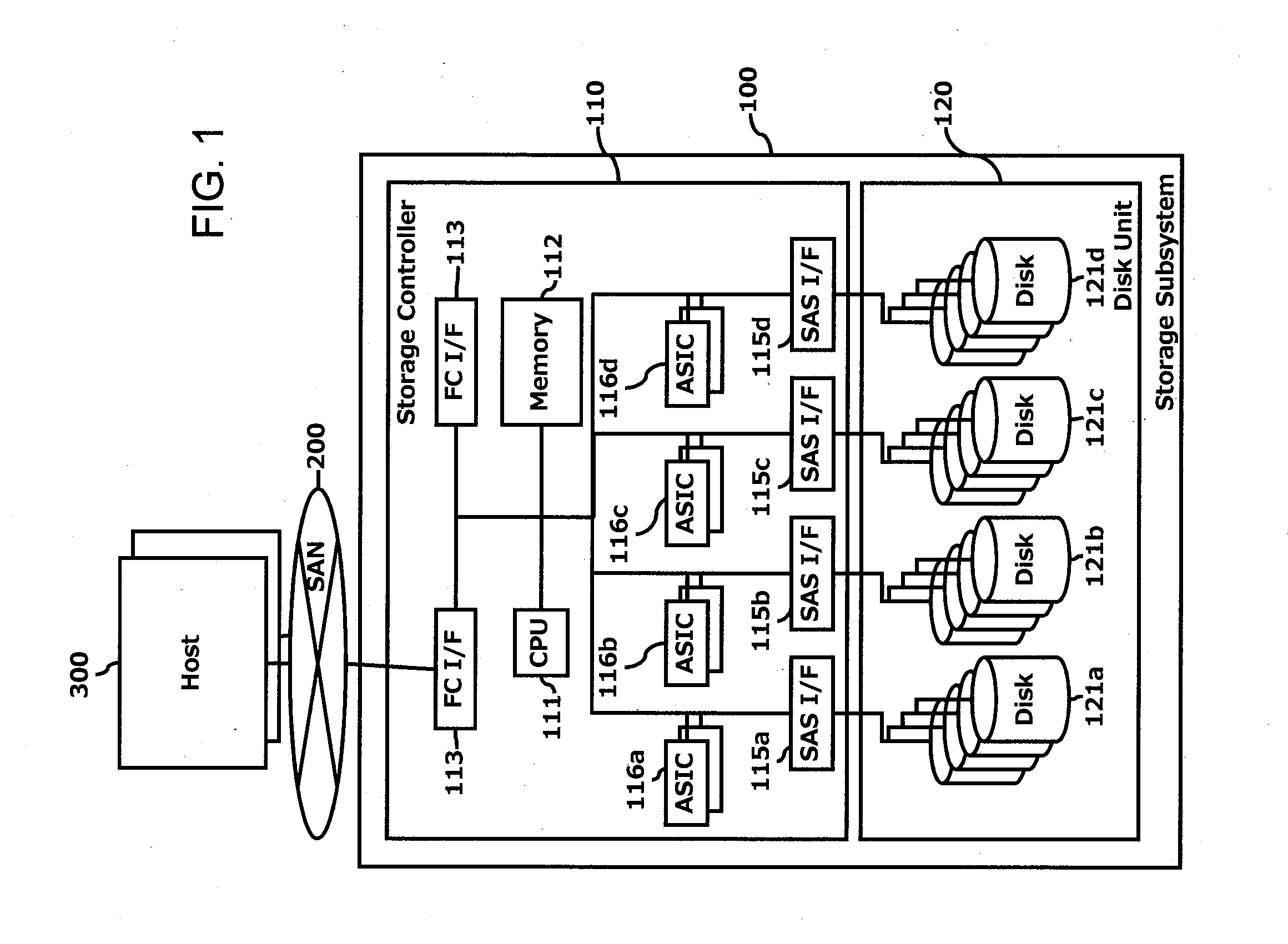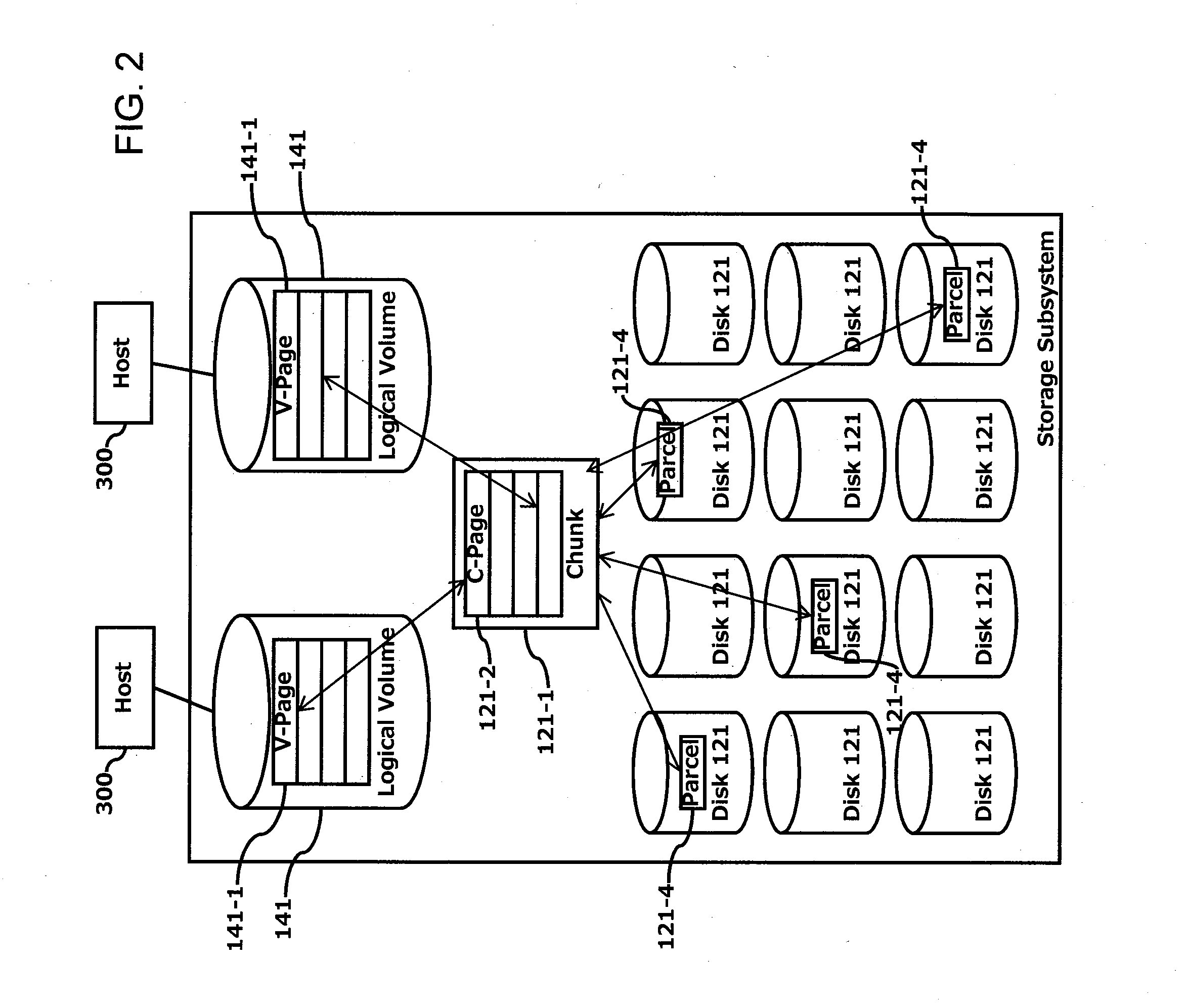Distribution design for fast raid rebuild architecture
a technology of distributed design and fast raid, applied in the field of storage systems, can solve the problems of reducing availability/reliability, storage sets the limitation of the distribution, etc., and achieves the effect of reducing availability/reliability, avoiding deterioration of availability/reliability, and total disk throughput performan
- Summary
- Abstract
- Description
- Claims
- Application Information
AI Technical Summary
Benefits of technology
Problems solved by technology
Method used
Image
Examples
first embodiment
[0036]The first embodiment of this invention is based on the second embodiment of U.S. Pat. No. 7,904,749, which is incorporated herein by reference in its entirety. In this embodiment, the RAID level is 5, but it can be applied to RAID 6 and RAID 4 in a similar way.
[0037]FIG. 1 illustrates an example of a hardware configuration of an information system in which the method and apparatus of the invention may be applied. A storage subsystem 100 is connected via a SAN (storage area network) to host computers 300. The storage subsystem 100 includes a storage controller 110 and a disk unit 120. The storage controller 110 has a CPU 111 that controls the storage subsystem 100 and runs the programs and uses the tables stored in a memory 112. The memory 112 stores data in addition to programs and tables. A channel interface 113 is provided for interfacing with the SAN 200. The storage controller 110 includes disk interfaces 115a to 115d that are linked to disks 121a to 121d in the disk unit ...
second embodiment
[0048]The second embodiment is based on the first embodiment. The following will focus on the differences between the two embodiments.
[0049]FIG. 9 illustrates an example of a memory 112 in the storage subsystem 100 of FIG. 1 according to the second embodiment. Only changes from the first embodiment of FIG. 4 will be discussed. In FIG. 9, a Page Rebuild Control 112-25-4′ (FIG. 10) is provided in place of the Page Rebuild Control 112-25-4 of FIG. 4 for the rebuild data in a parcel of broken disk.
[0050]FIG. 10 illustrates an example of a process flow of the Page Rebuild Control 112-25-4′ in the memory 112 of FIG. 9. This program runs when disk failure occurs. The program starts at 112-25-4-1. In step 112-25-4′-2, the program repeats this process until no parcel that belongs to the broken disk remains (i.e., all chunks in the broken RAID group are migrated). In step 112-25-4′-3, the program selects an unrecovered parcel of a broken disk, refers to the Capacity Pool Chunk Management Tabl...
third embodiment
[0052]The third embodiment is based on the second embodiment. The following will focus on the differences between the two embodiments. In this embodiment, the RAID level is 10, but it can be applied to RAID 1 in a similar way.
[0053]FIG. 12 illustrates an example of the logical configuration of a chunk 121-1 according to the third embodiment. Each disk is divided into plural parcels 121-4. Each parcel 121-4 is divided into plural capacity pool stripes 121-3. Four parcels 121-4 make up a chunk 121-1. Each of the four parcels 121-4 in a chunk 121-1 belongs to one disk 121 connected to different disk interfaces 115a-115d to avoid two points of failure. The selection of these four parcels 121-4 follows the evenly distributed algorithm. Each chunk 121-1 has plural capacity pool stripes 121-3 that make up a redundant array. In a stripe column in a chunk are data and mirrored data (as opposed to parity data in the first embodiment shown in FIG. 3).
[0054]FIG. 13 illustrates an example of the...
PUM
 Login to View More
Login to View More Abstract
Description
Claims
Application Information
 Login to View More
Login to View More - R&D
- Intellectual Property
- Life Sciences
- Materials
- Tech Scout
- Unparalleled Data Quality
- Higher Quality Content
- 60% Fewer Hallucinations
Browse by: Latest US Patents, China's latest patents, Technical Efficacy Thesaurus, Application Domain, Technology Topic, Popular Technical Reports.
© 2025 PatSnap. All rights reserved.Legal|Privacy policy|Modern Slavery Act Transparency Statement|Sitemap|About US| Contact US: help@patsnap.com



